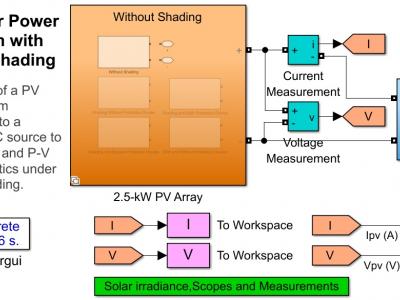Power and Energy
The dataset encompasses a diverse array of electrical signals representing Power Quality Disturbances (PQD), both in single and combined forms, meticulously generated in adherence to the IEEE 1159 guideline. Crucially, the dataset includes both raw data and corresponding labels, facilitating supervised learning tasks and enabling the development and evaluation of classification algorithms.
- Categories:
 1322 Views
1322 ViewsThe Excel file contains samples of a laboratory-generated noisy voltage signal with a dc component under nonideal sampling.
This test signal is generated in a laboratory for assessing power frequency estimation algorithms.
The first column represents the sample time.
The second column represents the voltage signal samples.
The reference fundamental frequency is 46 Hz.
The nominal voltage amplitude is 10 V.
The actual sampling rate varies in the range of 9.99834~10.01027 kHz.
- Categories:
 481 Views
481 Views
The synthetic dataset was developed in the Power Electronics and Electrical Drive Laboratory (Laboratório de Eletrônica de Potência e Acionamento Elétrico – LEPAC, in portuguese) at the Federal University of Espírito Santo (UFES), Brazil. The dataset was generated from a computer simulation of a three-phase squirrel cage induction motor model with the insertion of faults in the rotor, specifically broken bars. The induction motor mathematical model with broken bar fault is based on reference [1].
- Categories:
 1250 Views
1250 Views
An experimental study was conducted on a high-voltage glass-type disc (LD-160) to investigate the effect of string arrangements on pollution and icing flashover characteristics. Two Artificial Neural Network (ANN) applications were developed to simulate and calculate the flashover voltage based on the experimental results. The test results showed that the inverted T-type arrangement can improve the pollution flashover voltage and increase the icing flashover voltage of insulator strings compared to the traditional arrangement of the I-string.
- Categories:
 60 Views
60 ViewsThe dataset contains integrating renewable energy sources into power grids, emphasizing the need for advanced data-driven optimization models for optimal power flow problems. The dataset, which includes comprehensive details on both load and generator buses, covering active and reactive power measurements and voltage magnitudes and angles for the modified IEEE 39 bus system with wind power integration, is ideally suited for data-driven power system analysis studies. The dataset was generated for a part of the experiments.
- Categories:
 680 Views
680 Views
Due to the diversity of battery types and capacities, wireless power transfer (WPT) systems for autonomous underwater vehicles (AUVs) have large variations in charging voltages and currents. Conventional solutions of using DC/DC converters to adapt to different specifications may cause increased cost and volumeand reduced overall efficiency. To address this issue, this video presents a new AUV WPT system with DC-link series/parallel AC-link parallel rectifiers for different charging voltages and currents.
- Categories:
 108 Views
108 Views
Regular and rigorous inspection of outdoor insulators is essential for uninterrupted power grid operation. Recent advances in computer vision enabled replacing conventional subjective, costly, and inefficient visual insulator inspection with automated diagnosis from unmanned aerial vehicle (UAV) taken images. In this study, advanced computer vision algorithms, namely, family of YOLOv3 and YOLOv5 architectures, are trained and compared for classification of frequently encountered insulator mechanical faults from UAV images.
- Categories:
 108 Views
108 ViewsThis study presents an automated approach for the generation of graphs from hand-drawn electrical circuit diagrams, aiming to streamline the digitization process and enhance the efficiency of traditional circuit design methods. Leveraging image processing, computer vision algorithms, and machine learning techniques, the system accurately identifies and extracts circuit components, capturing spatial relationships and diverse drawing styles.
- Categories:
 657 Views
657 Views
A PSCAD simulation model of direct-drive wind farm connected to the grid via VSC-HVDC is provided. Because there are a large number of power electronic devices and complex multi-time scale control links in the system, there is mutual coupling between power electronic devices or between power electronic devices and the power grid, which may lead to the risk of oscillation in the wide-band range from several hertz to hundreds of hertz.
- Categories:
 261 Views
261 Views



